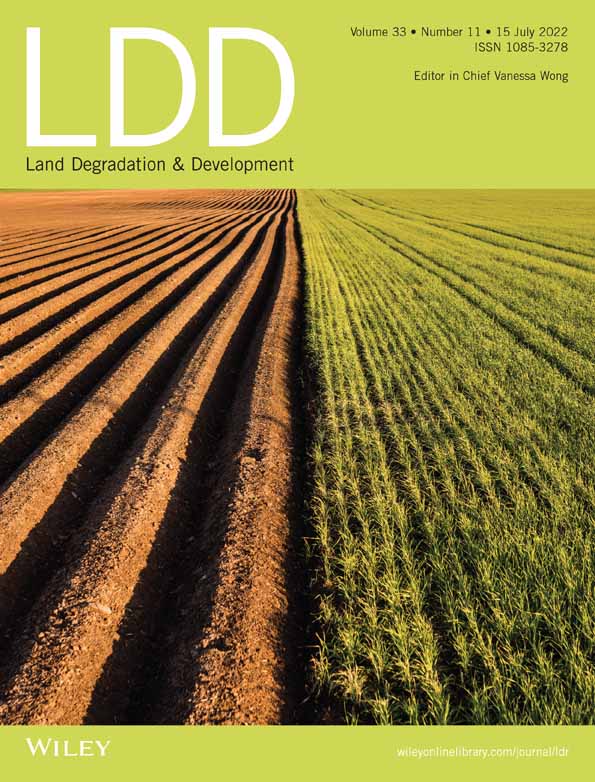View Item
- xmlui.general.dspace_homeCentros Regionales y EEAsCentro Regional Salta - JujuyEEA SaltaArtículos científicosxmlui.ArtifactBrowser.ItemViewer.trail
- DSpace Home
- Centros Regionales y EEAs
- Centro Regional Salta - Jujuy
- EEA Salta
- Artículos científicos
- View Item
Influence of land-use changes on microbial community structure and diversity in a semiarid region
Abstract
Land-use change and the conversion of land into croplands is one of the main drivers of soil degradation and the loss of soil organic carbon. Few studies have evaluated the impact of the expansion of the agricultural frontier on soil microbial communities in the Gran Chaco region in South America; therefore, the objective of this study was to explore how soil microbial communities respond to land-use changes in a semiarid region of Argentina. The land
[ver mas...]
Land-use change and the conversion of land into croplands is one of the main drivers of soil degradation and the loss of soil organic carbon. Few studies have evaluated the impact of the expansion of the agricultural frontier on soil microbial communities in the Gran Chaco region in South America; therefore, the objective of this study was to explore how soil microbial communities respond to land-use changes in a semiarid region of Argentina. The land uses selected were total and selective clearing with livestock (TC-livestock and SC-livestock), total clearing with agriculture (TC-agriculture), and an undisturbed site (R-Chancaní). Our results suggest that microbial abundances were strongly influenced by seasonal changes. In both seasons, the lowest values of total microbial biomass were observed in TC-agriculture and TC-livestock. In the wet season, TC-agriculture had the lowest fungal abundance, and both total clearing sites (TC-livestock and TC-agriculture) had higher bacterial abundance than the other sites. Our data also showed that the Shannon and richness indexes were highest at the farming sites, indicating a similar tendency in the diversity indexes in both dry and wet seasons. According to Pearson correlation analysis, humic substance (HS) content was a key driver influencing soil microbial communities, demonstrating that high HS content may significantly increase bacteria, fungi, and total PLFAs. Microbial composition highly depended on seasonal changes. Overall, our results suggest that land-use change altered microbial community structure and bacterial diversity, and that HS content played a crucial role in driving changes in soil microbial composition.
[Cerrar]

Author
Vázquez, Carolina;
Verdenelli, Romina A.;
Merlo, Carolina;
Perez Brandan, Carolina;
Kowaljow, Esteban;
Meriles, José Manuel;
Fuente
Land Degradation and Development (First published: 08 July 2022)
Date
2022-07
Editorial
Wiley
ISSN
1085-3278
1099-145X
1099-145X
Formato
pdf
Tipo de documento
artículo
Palabras Claves
Derechos de acceso
Embargado
 Excepto donde se diga explicitamente, este item se publica bajo la siguiente descripción: Creative Commons Attribution-NonCommercial-ShareAlike 2.5 Unported (CC BY-NC-SA 2.5)
Excepto donde se diga explicitamente, este item se publica bajo la siguiente descripción: Creative Commons Attribution-NonCommercial-ShareAlike 2.5 Unported (CC BY-NC-SA 2.5)

